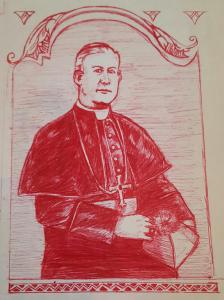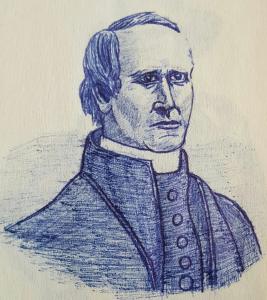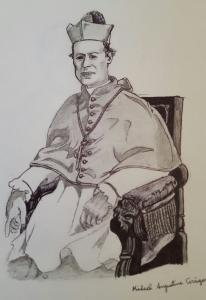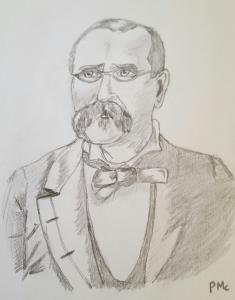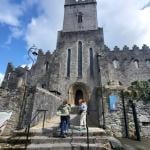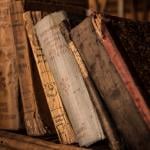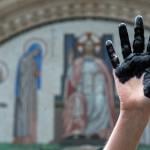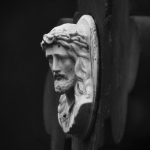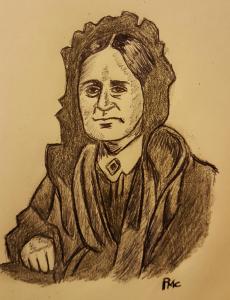 In the Fall of 1869, in the Bronx’s then-rural Fordham section, a girls’ academy opened under the tutelage of one Madame Victorine Boucher (1812-1883). The short-lived school’s proceeds were used to form a school for the deaf, which has lasted quite a bit longer. According to one historian, the first student was “a little fair-haired German girl.” A few months later, St. Joseph’s Institute for the Improved Instruction of Deaf Mutes moved to a small frame house at 772 East 188th Street. A reporter observed:
In the Fall of 1869, in the Bronx’s then-rural Fordham section, a girls’ academy opened under the tutelage of one Madame Victorine Boucher (1812-1883). The short-lived school’s proceeds were used to form a school for the deaf, which has lasted quite a bit longer. According to one historian, the first student was “a little fair-haired German girl.” A few months later, St. Joseph’s Institute for the Improved Instruction of Deaf Mutes moved to a small frame house at 772 East 188th Street. A reporter observed:
The undertaking had to struggle in the beginning with great difficulties, and, but for the loans advanced by friends from time to time, would probably have sunk under the weight of its pecuniary difficulties.
Victorine Boucher was born in France. In 1837, she joined the Daughters of the Heart of Mary, and taught in their schools before coming to the United States in 1851. The Daughters were a unique community, founded during the French Revolution when religious garb was outlawed. They wore secular clothing and were addressed as “Madame” rather than “Sister,” a practice they continue to this day. Their charism is “to provide for the continuance of religious life under all circumstances and in any milieu.”
In 1874, the school opened up a branch in Brooklyn’s Bedford-Stuyvesant section on Buffalo Avenue, which merged with the Bronx campus in 1936. During the 1870’s, the school bought
A magnificent property at Throgg’s [sic] Neck, then in the possession of Chas. Lochran, Esq. The house was of brick and very large; appearing from its arrangements well adapted to the needs of an institution. Numerous out-buildings and spacious grounds combined to render it desirable and, though its distance from the railway station was felt to be a serious inconvenience, the purchase was effected, and the boys were soon comfortably settled in Oakland Cottage.
The Throgs Neck campus opened in 1876. Seven years later, the American Annals of the Deaf carried the following notice:
St. Joseph’s (Fordham, N.Y.) Institute.– Madame Victorine Boucher, the earnest and devoted president of the Institute since its organization, died of pneumonia in April last. In accordance with her dying wishes, no biographical sketch is published.
A friend of Madame Boucher, Jesuit Father Thomas A.J. Freeman, taught science at St. John’s College (now Fordham University). Father Freeman was fluent in American Sign Language, and served as chaplain to the school during the 1880’s. Freeman Hall on the Fordham campus is named in his honor.
In 1913, the present building was opened at Throg’s Neck. The school website notes: “Since then, the handsome red brick building has been an impressive landmark in the Bronx.” The school currently serves students from infancy through eighth grade. In 2011, the New York Daily News wrote:
The Yankees, of course, are big on their tradition and their history, but they are a startup compared with the St. Joseph’s School for the Deaf, which has been educating deaf children in the Bronx since 1869, and has been in its current location, a stately brick building hard by the Hutchinson Parkway and Cross Bronx Expressway, for almost a century.
This year, St. Joseph’s School for the Deaf is celebrating the sesquicentennial of its founding this year. And its mission is more vital than ever.
Karen Kennedy, who has been at St. Joseph’s for 32 years, considers it a “very nurturing” place. To work there, she stresses, is “a calling.” She feels it’s the strong “sense of community” that keeps people working there. A recent addition to the faculty is Tiarra Lopez, who says the school “feels like a family. I love the small setting.” This year, Virginia O’Donnell McNamara celebrates thirty years at St. Joseph’s. From the moment she arrived for her job interview, she says, “It felt like home.” It still feels that way, she adds.
(*The drawing of Madame Victorine Boucher is by Pat McNamara.)


